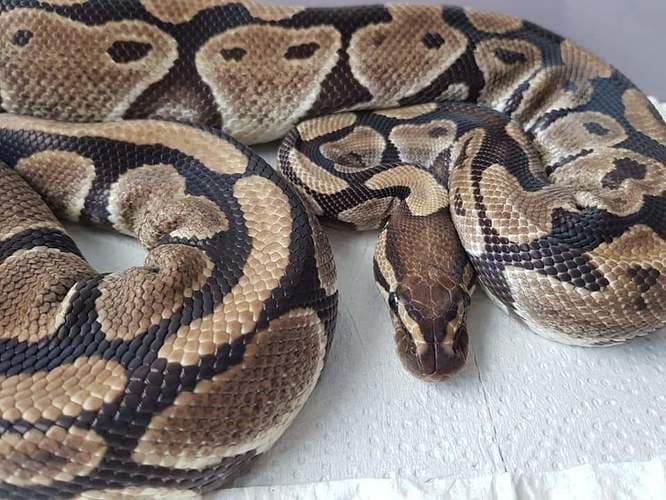RECO
Type: Other
First Produced By: Engel Reptiles
Aliases: RECO Anerythristic
First Produced In: 2011
Availability: Rarest
Last Updated: 2022-12-08
Do you have any suggestions or corrections for this article?
Click here to contribute feedback
About
When pairing a RECO Anery to an other morph, you can get visual RECO Anerys which are all males. All the females from this clutch are het RECO Anery while the other non visual males are non recessive. That’s absolutely unique and all proven out.
History
Today I would like to tell you a fantastic story that stretches over 7 years of Köpie breeding and turns the classic theory of heredity completely upside down.
It’s about an animal that we later gave the name RECO Anerythristic. It all started with the purchase of a female which we bought as an Axanthic and which also looked like an Axanthic.
Like many of you, we also wanted to breed an Axanthic Piebald at the time. The first pictures of Markus & Jayne Ball Pythons from a Lightening Pied got us excited right away. As you all know, it is a double recessive beast, a project that cannot be completed in 3-4 years. Still, we wanted to do it. In addition, our entry point was this Axanthic female. As soon as she was ready for breeding, we mated her to our Piebald buck in 2011 for doppel hets. to get. Luckily she also laid 11 healthy eggs. All were dead and after 8 weeks 11 nice, healthy snakes hatched, but there was something strange. There were 4 animals that looked different than the rest. We couldn’t make sense of it. They looked like Axanthics.
It really couldn’t be. It should only be double hets. come out and no differently colored animals. It turned out that all 4 strange animals were males and all other normally colored 7 animals were females. The only explanation I had was that our male het. must be axanthic and that the differently colored animals are all males must be coincidence. That was the end of the matter for us. When the females were ready to mate, they were mated to males from the same litter. The result indicated, as calculated according to the normal theory of heredity, with a chance of 1:8 for an Axanthic het. Pied down. We also got beautiful piebalds that also looked like axanthics at first. So it was clear to us that it had to be Axanthics. Only over time, however, did they get an increasingly yellow hue; so it couldn’t be Axanthics.
They contained black and yellow, but no red. So it could only be anerythristics. A total of 12.6% anerythristic piebalds came out. This rate also confirms that the first generation had to be anerythristic het.piebald males, since double hets only have a 6.2% chance of an anerythristic pied. We were right on target with the theoretical value of 12.5% (1:8).
Anerythristic Clown
The next project we tackled was Anerythristic Clowns. We mated our clown male back to the anerythristic female and got a clutch of 14 eggs, from which 14 normal colored double het. females hatched.
A stupid coincidence? 14 hens and no suitable double het. Males included (this is also a story that I will take up later. This clown male fathered 60 offspring with different females and all 60 of them were female animals). So the following year the same mating, but with another clown male, because we didn’t want to have only females again. From this mating we got 8 eggs, which again included 3 strange looking animals. The same game as with the piebalds was repeated.
There were again 3 Anerythristic het. Clowns there and all males again. The remaining 5 animals were normally stained double het. Female. It was now clear to us that we were dealing with a special inheritance scheme that had not existed before. In the following year 2014/2015 the first doppel het.Clown females were already sexually mature, but the Anerythristic het.Clown males were not yet and so we wanted at least with these doppel het. females breed simple clowns. We mated her with another clown male, which we had acquired in the meantime. We got 4 clutches with a total of 28 eggs. When they hatched it wasn’t a big surprise to us when there were 1 Anerythristic Clown and 5 Anerythristic het.Clown males among them.
By now, at the latest, the inheritance scheme was absolutely clear. Since these litters also included normal-colored males, this line inherited the anerythristic gene codominantly in the male line and recessively in the female line. An inheritance scheme that is still unique in the world today. In the meantime there are already many inheritance schemes that deviate from the norms, such as the male or female maker in the Bananas, the Super stripes or our female maker Clown, but such inheritance did not exist before. Since the anerythristic gene is recessive in female offspring and codominant in males, we have these animals RECO Anerythristic baptized. In the case of a codominant animal, there should actually be a super form, which unfortunately we have not yet received, although we have already had several matings with double hets and anerythristic piebald.
Further matings according to the same scheme :
RECO Anerythristic with Lemon Blast. It came out again in the F1 generation RECO Anery Pastel male and RECO Anery Lemon Blast male.
Appearance
Body
Looks a lot like axanthic, deletes the reddish tones
Controversy
-
There is no erythrin pigment in ball pythons, ergo, there can be no anerythristic morphs. The only two pigments in ball pythons are melanin and xanthin.
-
The inheritance pattern for this would be classified as ‘sex-linked recessive’. The mutation is recessive, as observed in females that are heterozygous being non-visual while females that are homozygous are visual. The males appear as visuals because there is no second allele to counter the effect of the mutation. If these reported results are accurate, it would appear there is a small region of difference between the X and Y chromosomes in ball python chromosomes would seem to not carry some subset of genes.
Proven Lines
No known proven lines
Related Traits
No known related traits
Combos
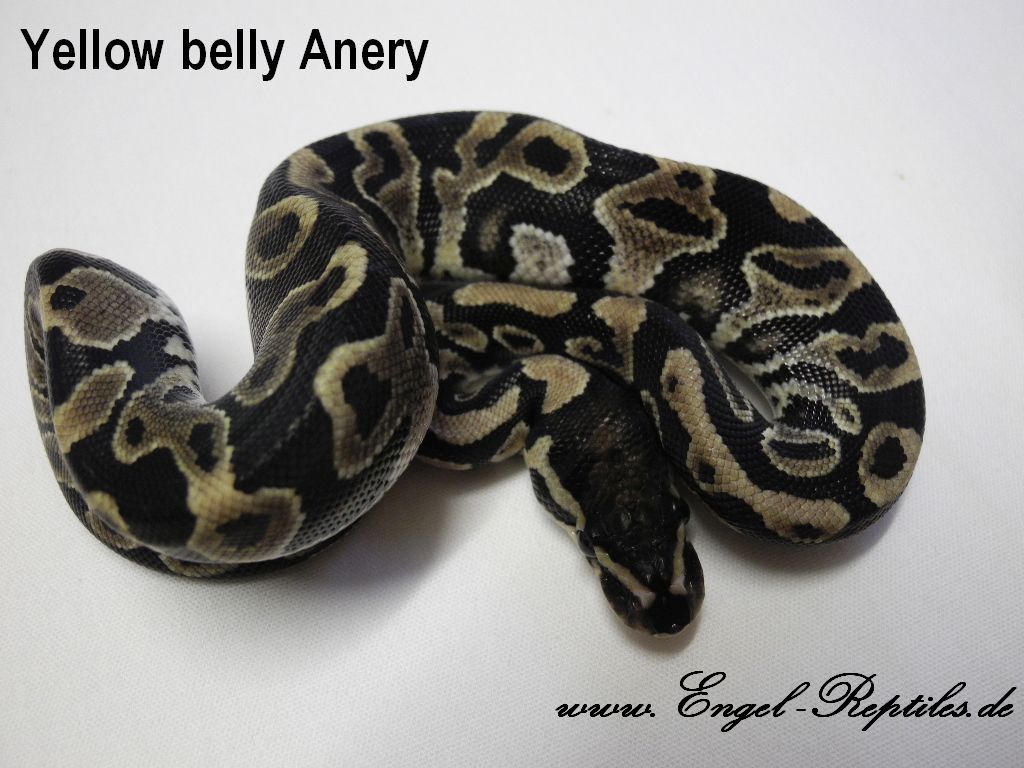
YB RECO Anery by Engel Reptiles
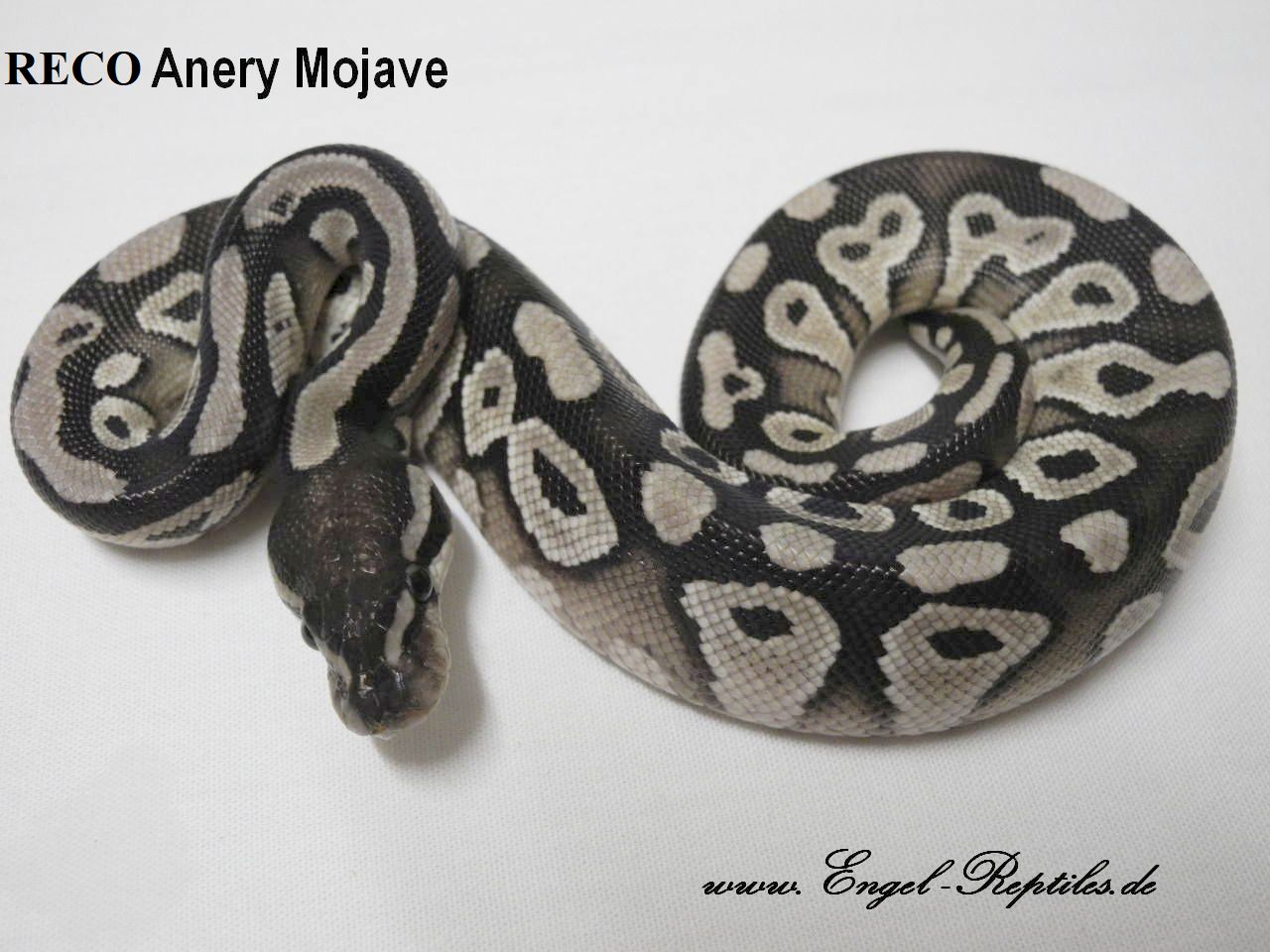
RECO Anery Mojave by Engel Reptiles
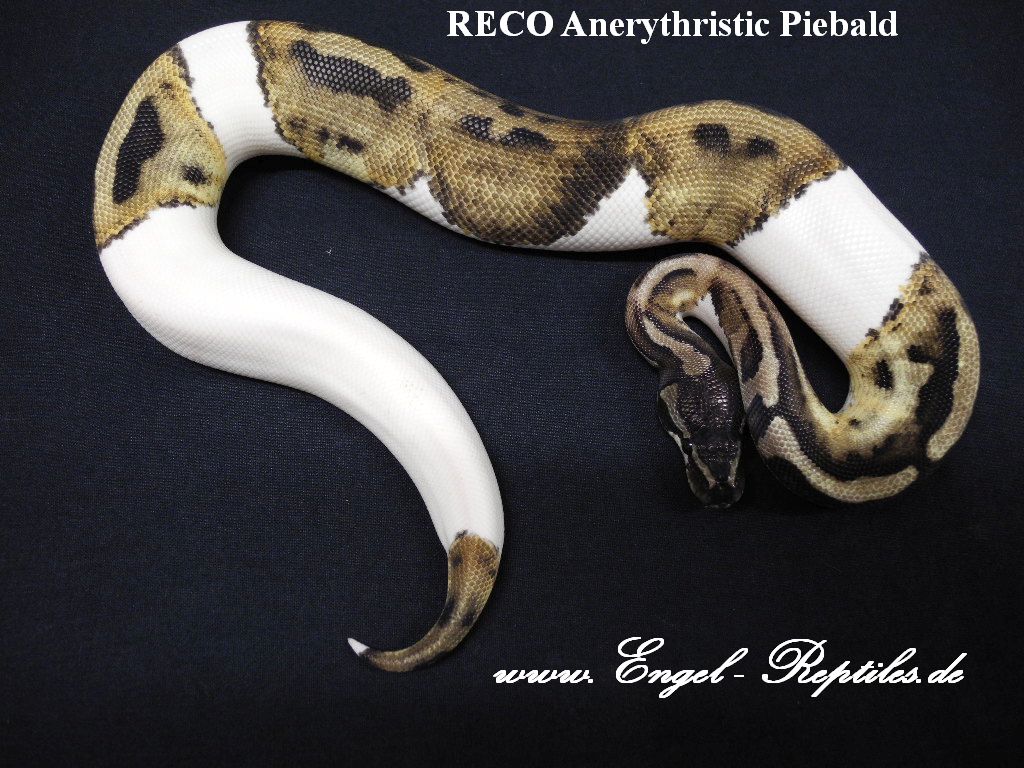
RECO AneryPiebald by Engel Reptiles
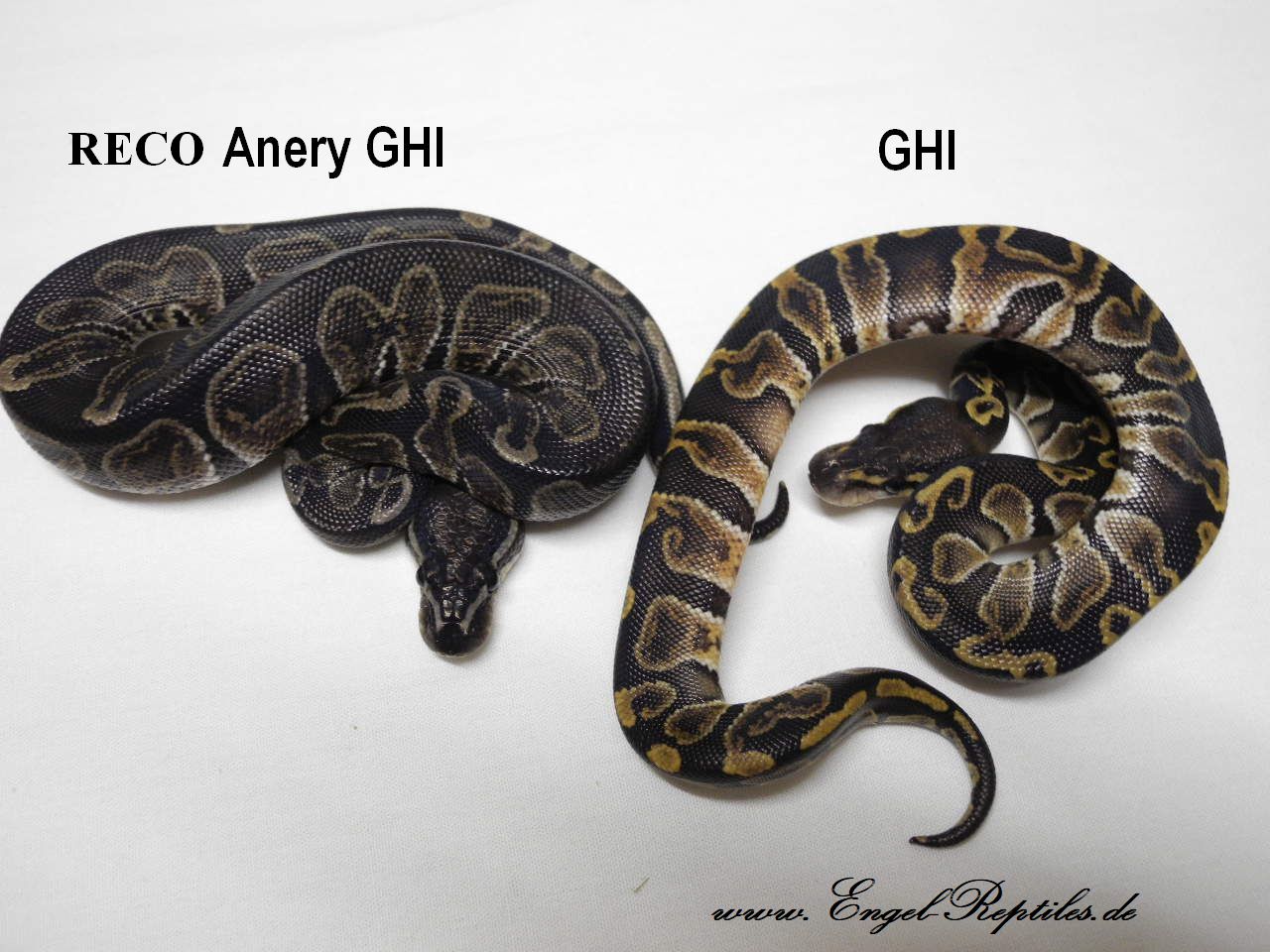
RECO Anery GHI by Engel Reptiles

Ultramel RECO Anery by Engel Reptiles

RECO Anery GHI Pastel by Engel Reptiles
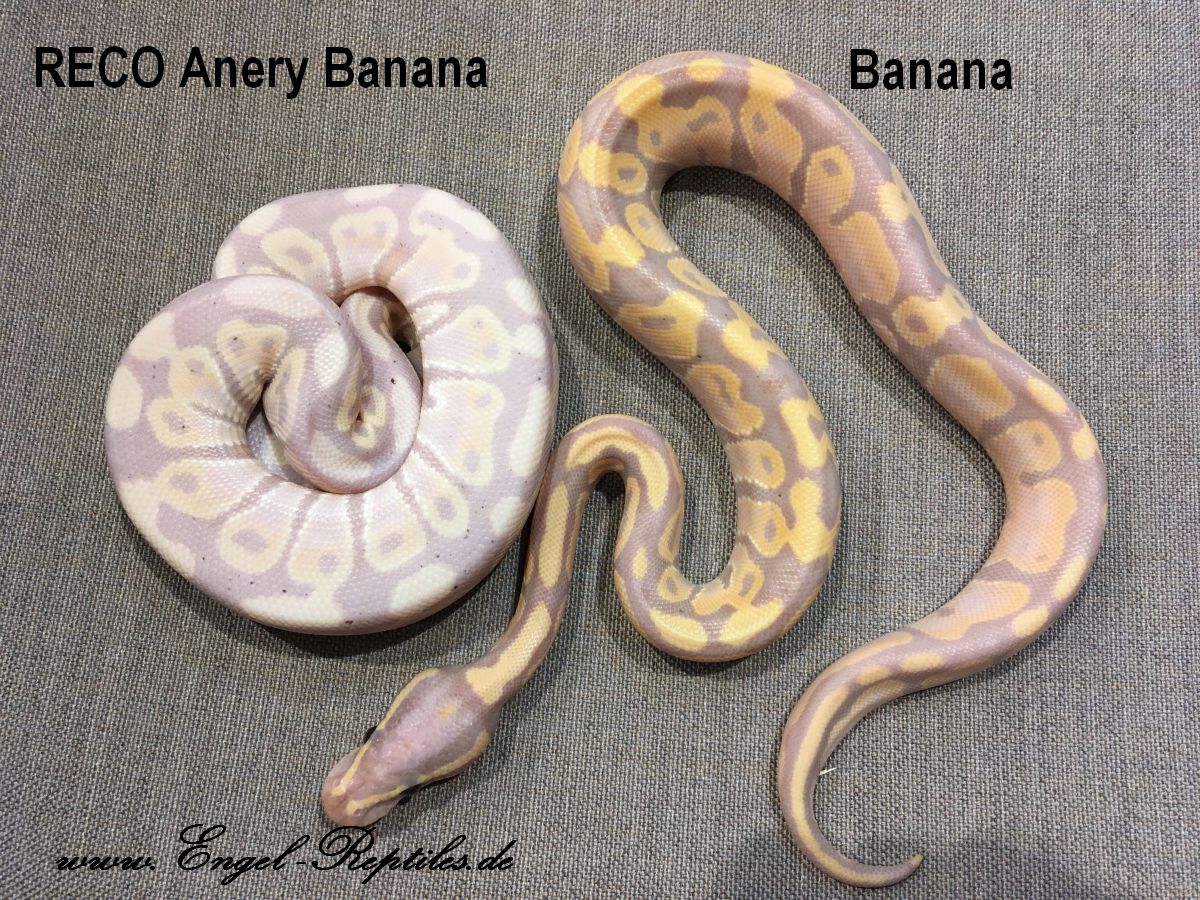
RECO Anery Banana by Engel Reptiles

RECO Anery Champagne by Engel Reptiles
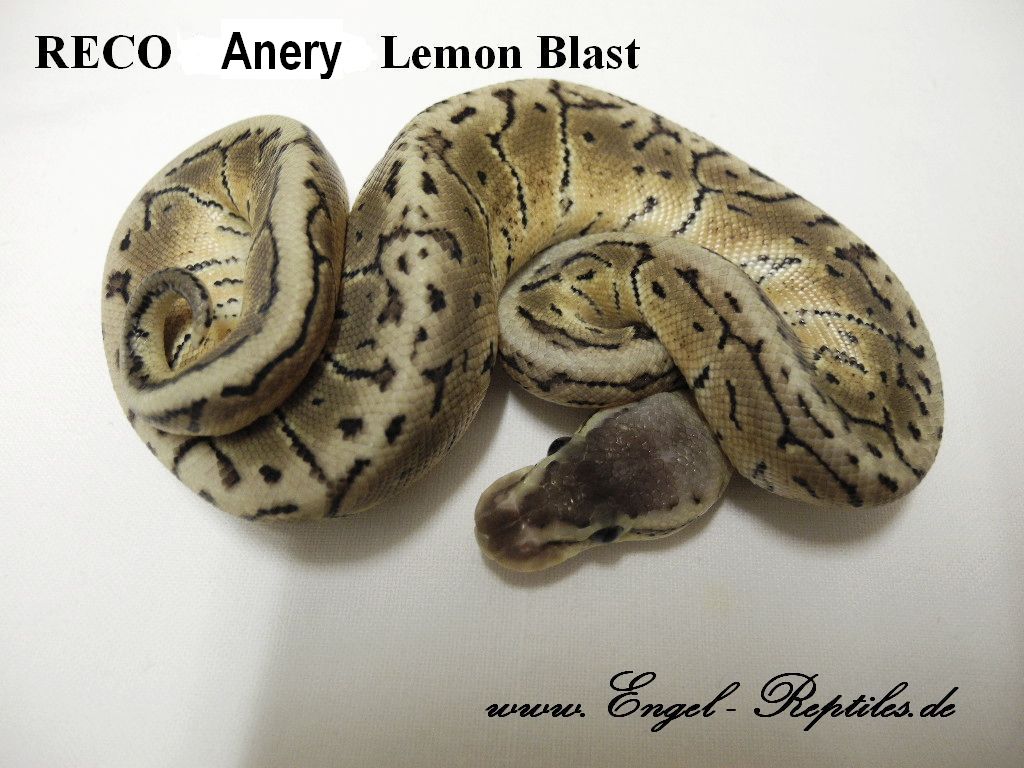
RECO Anery Lemon Blast by Engel Reptiles

RECO Anery Clown by Engel Reptiles
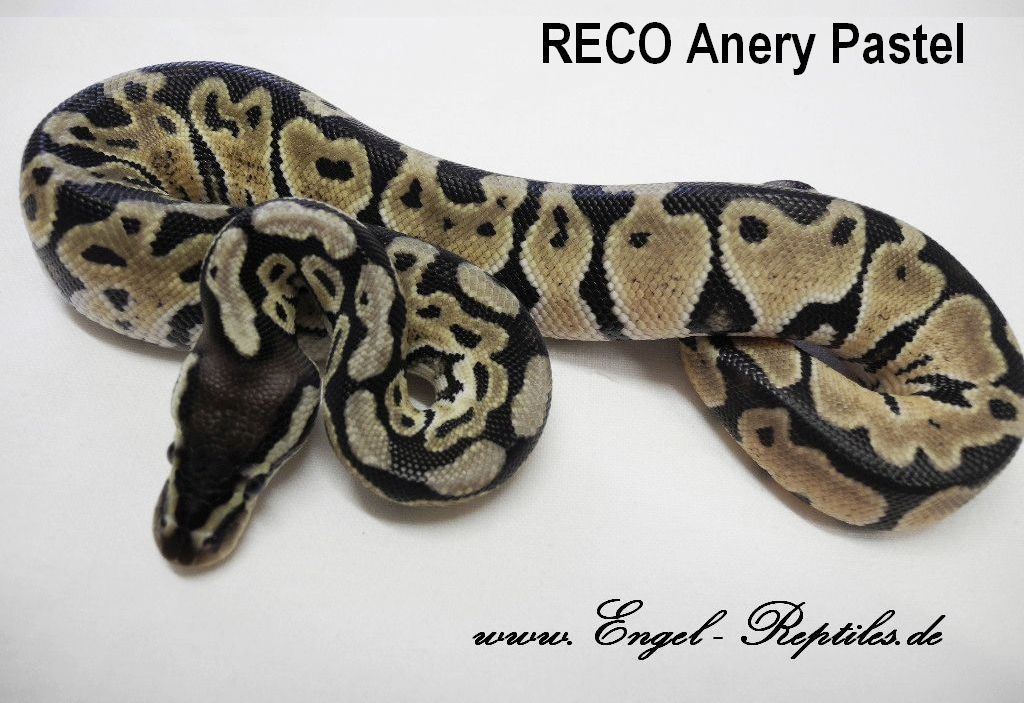
RECO Anery Pastel by Engel Reptiles
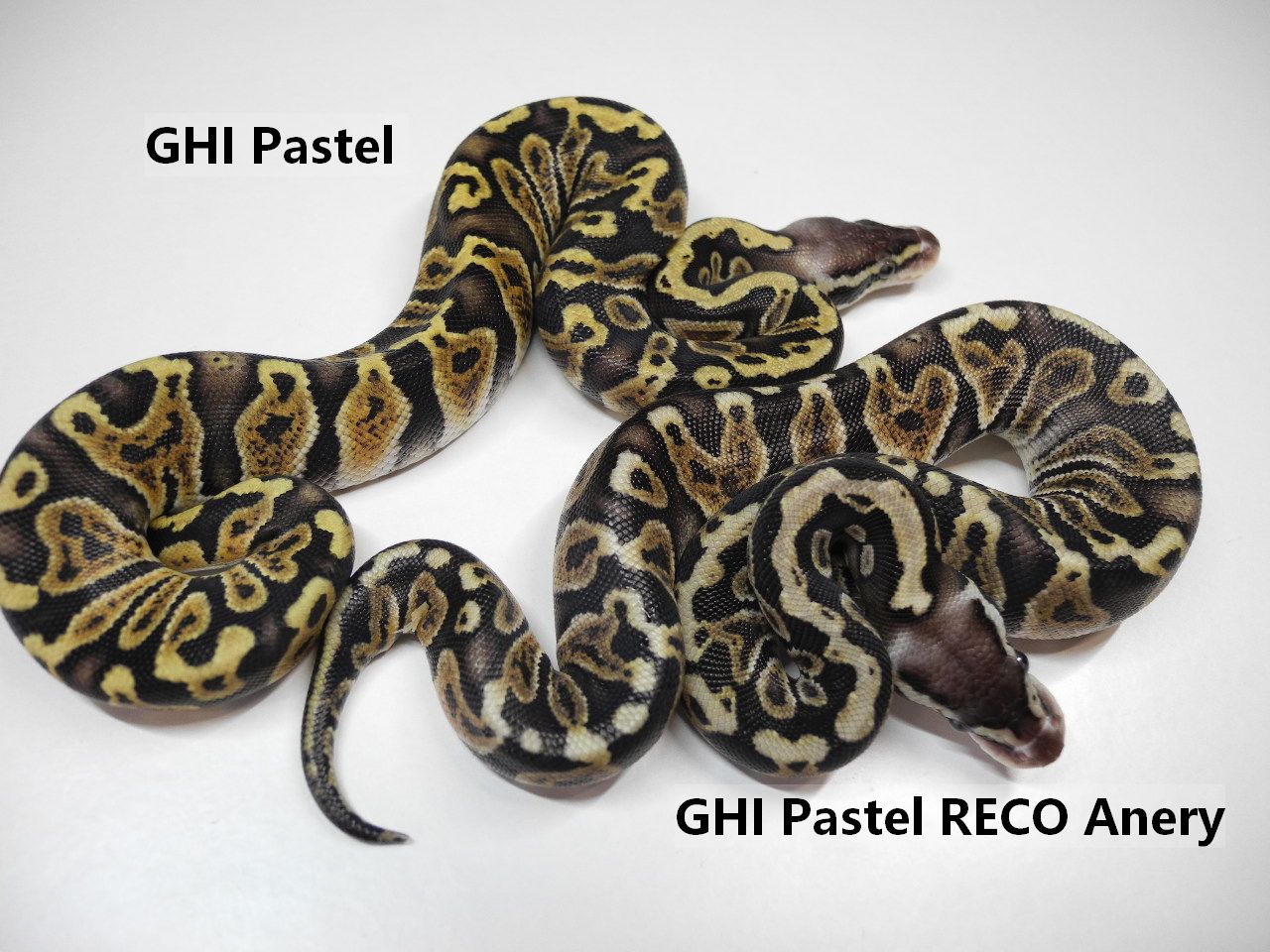
GHI Pastel RECO Anery by Engel Reptiles

GHI Mojave RECO Anery by Engel Reptiles

Worldsfirst RECO Anery Pewter from 2020 by Takatukapythons
